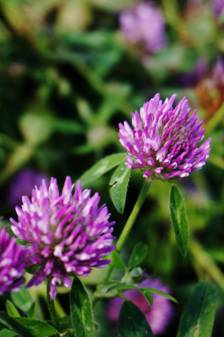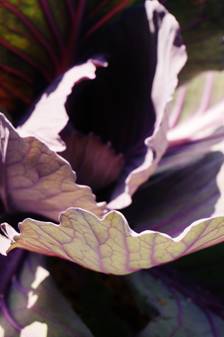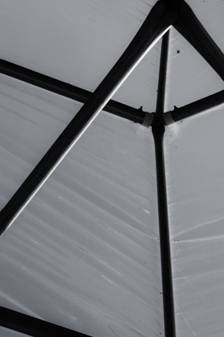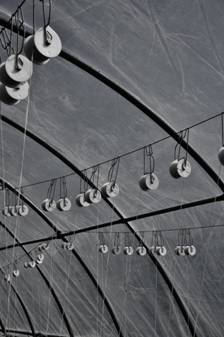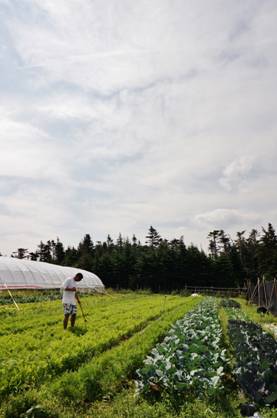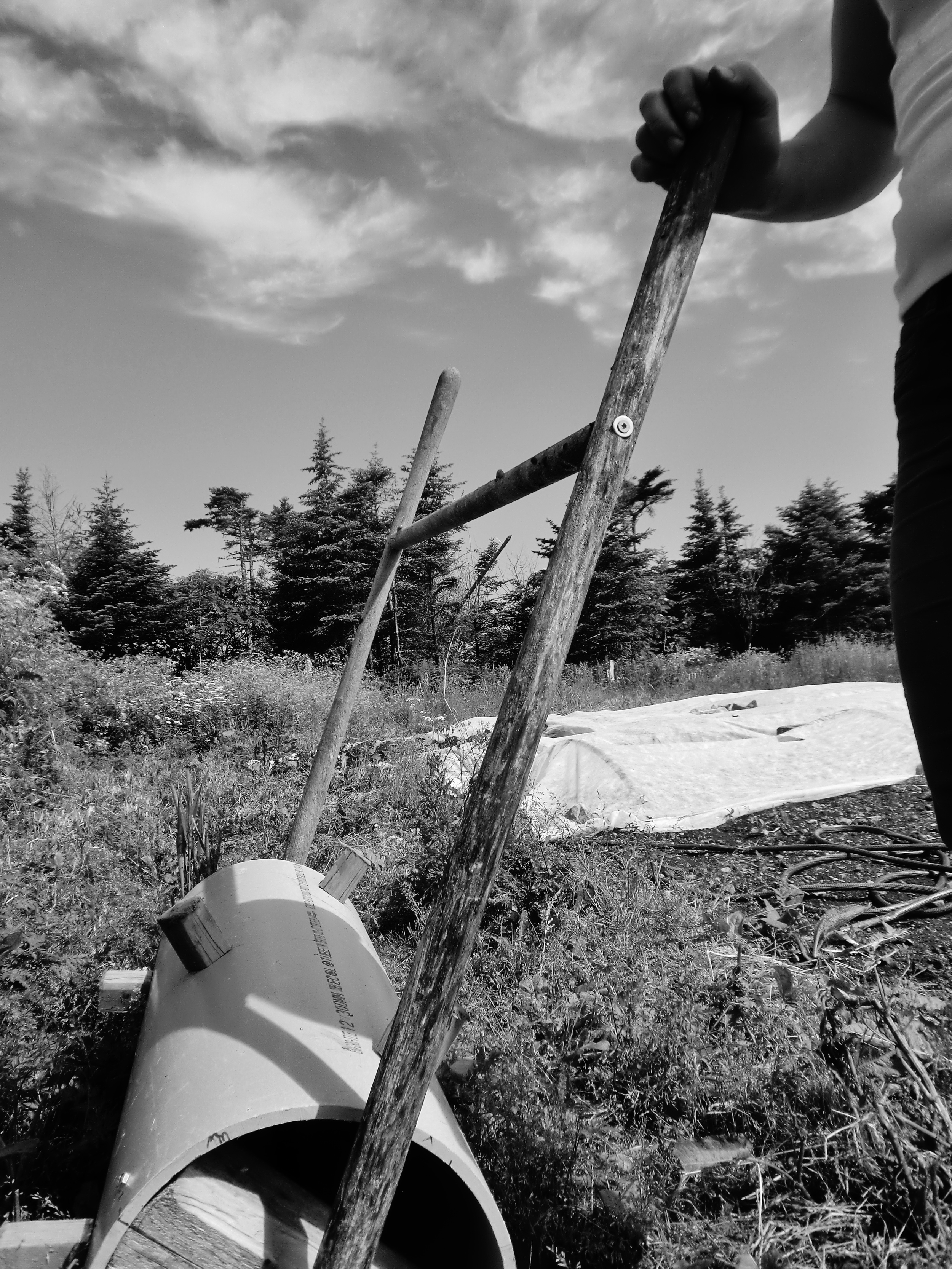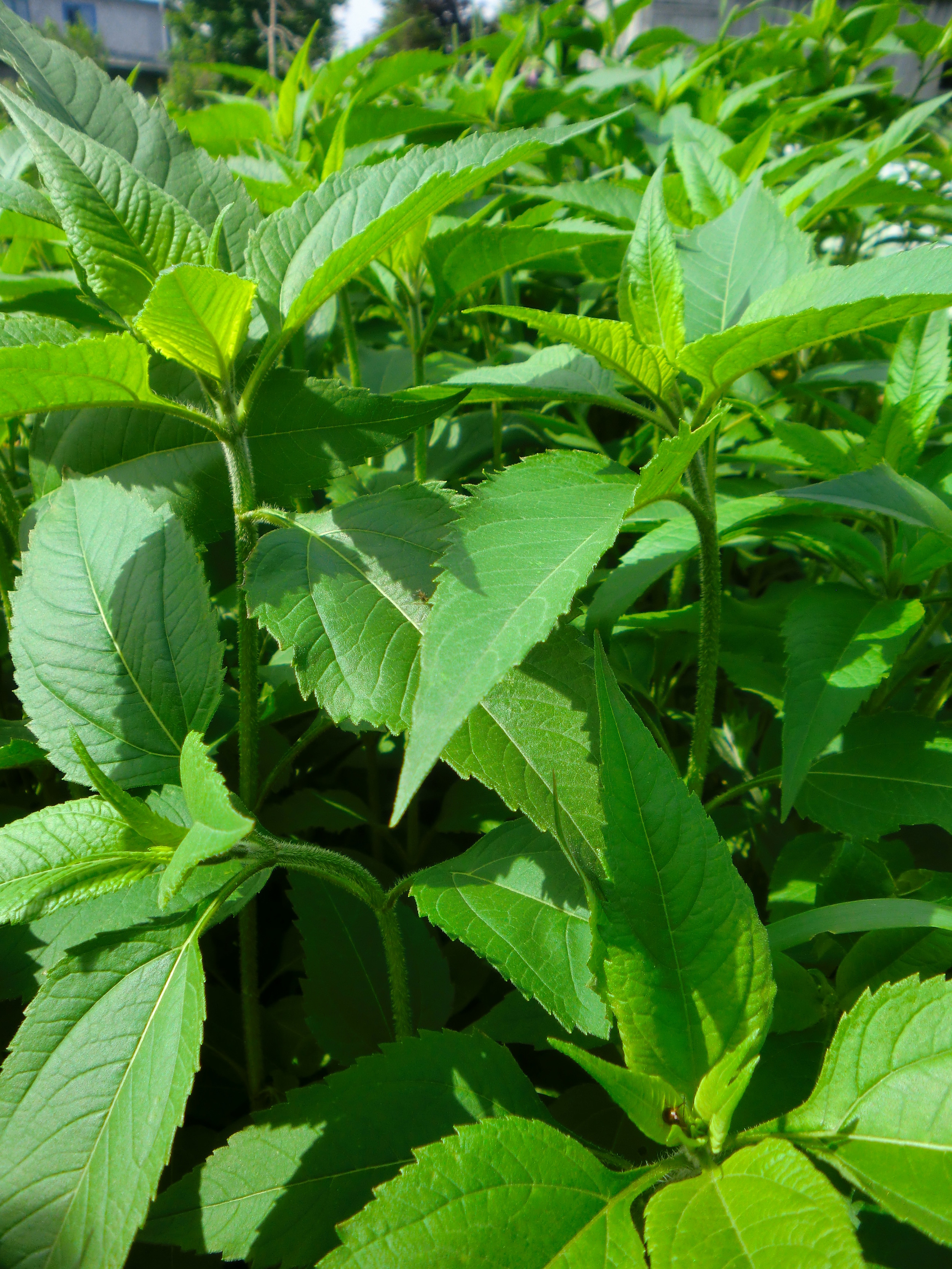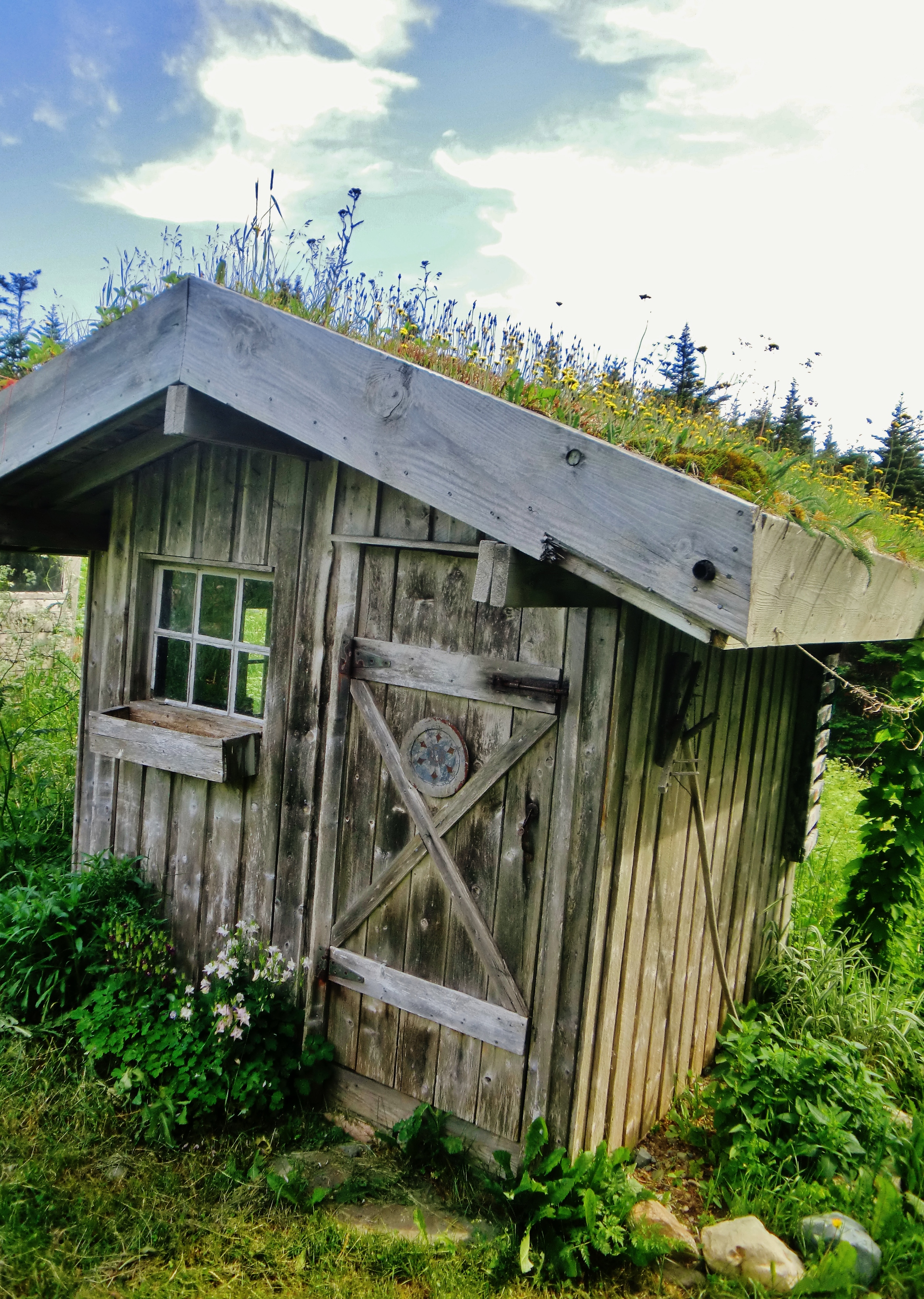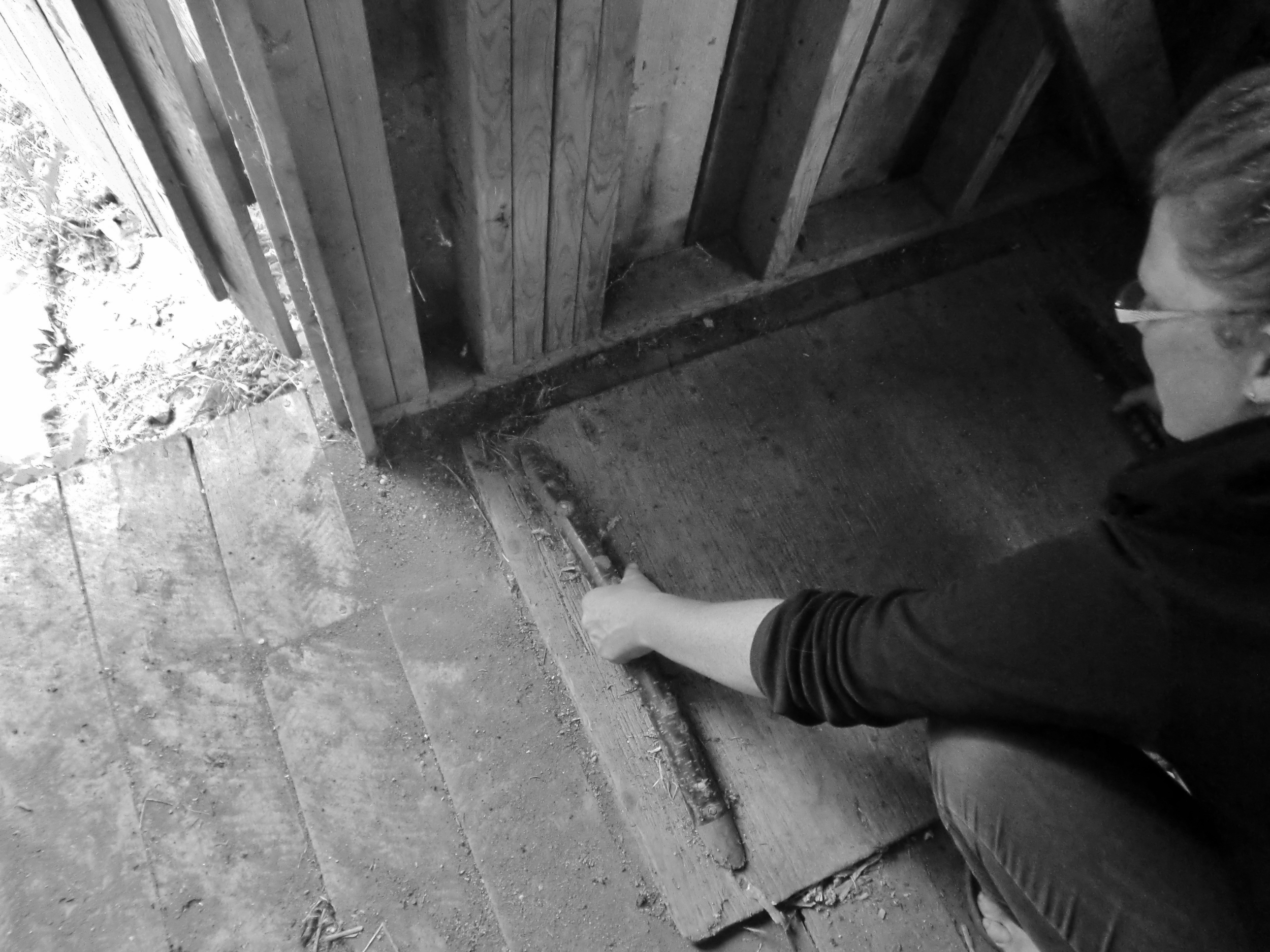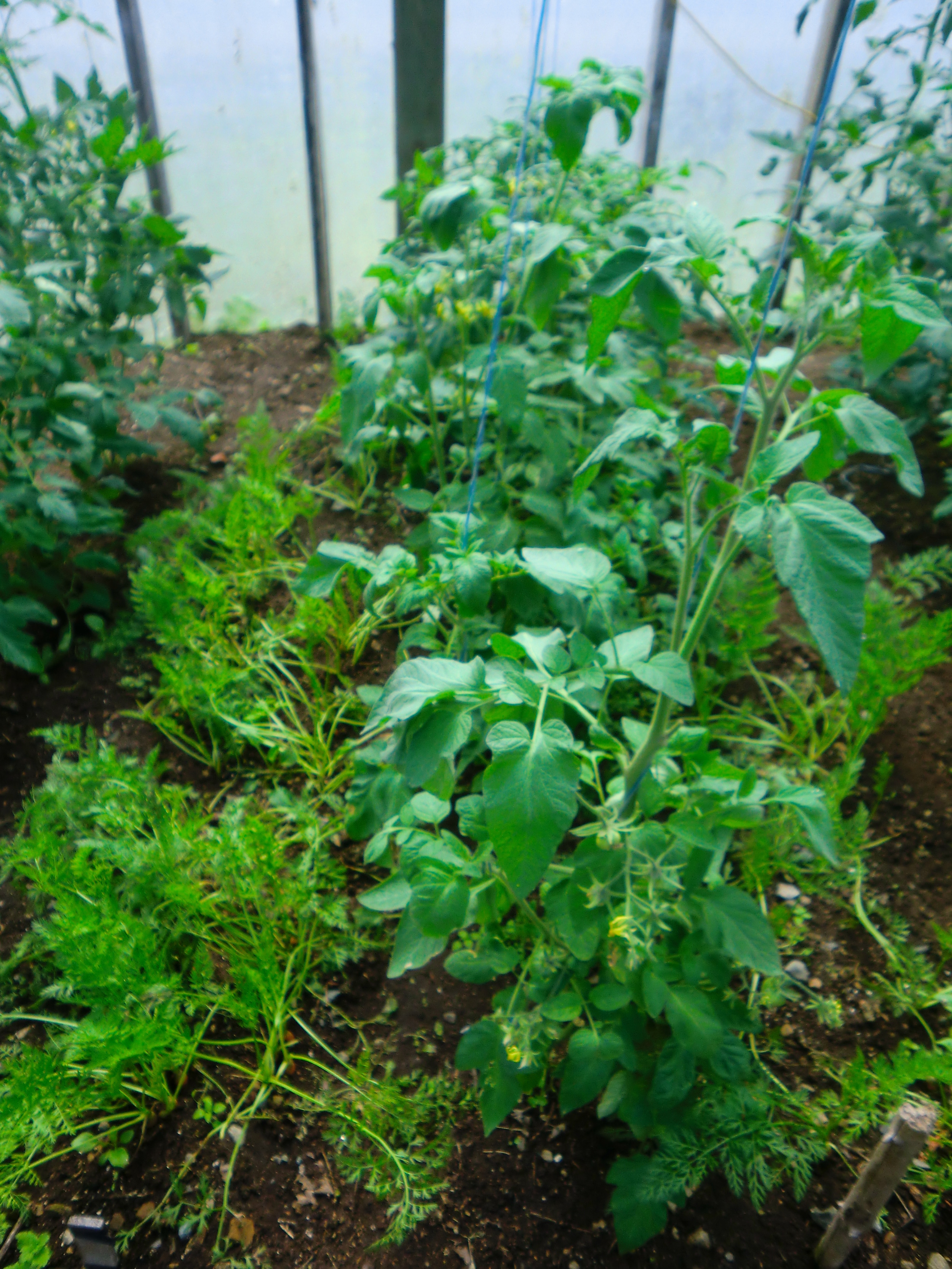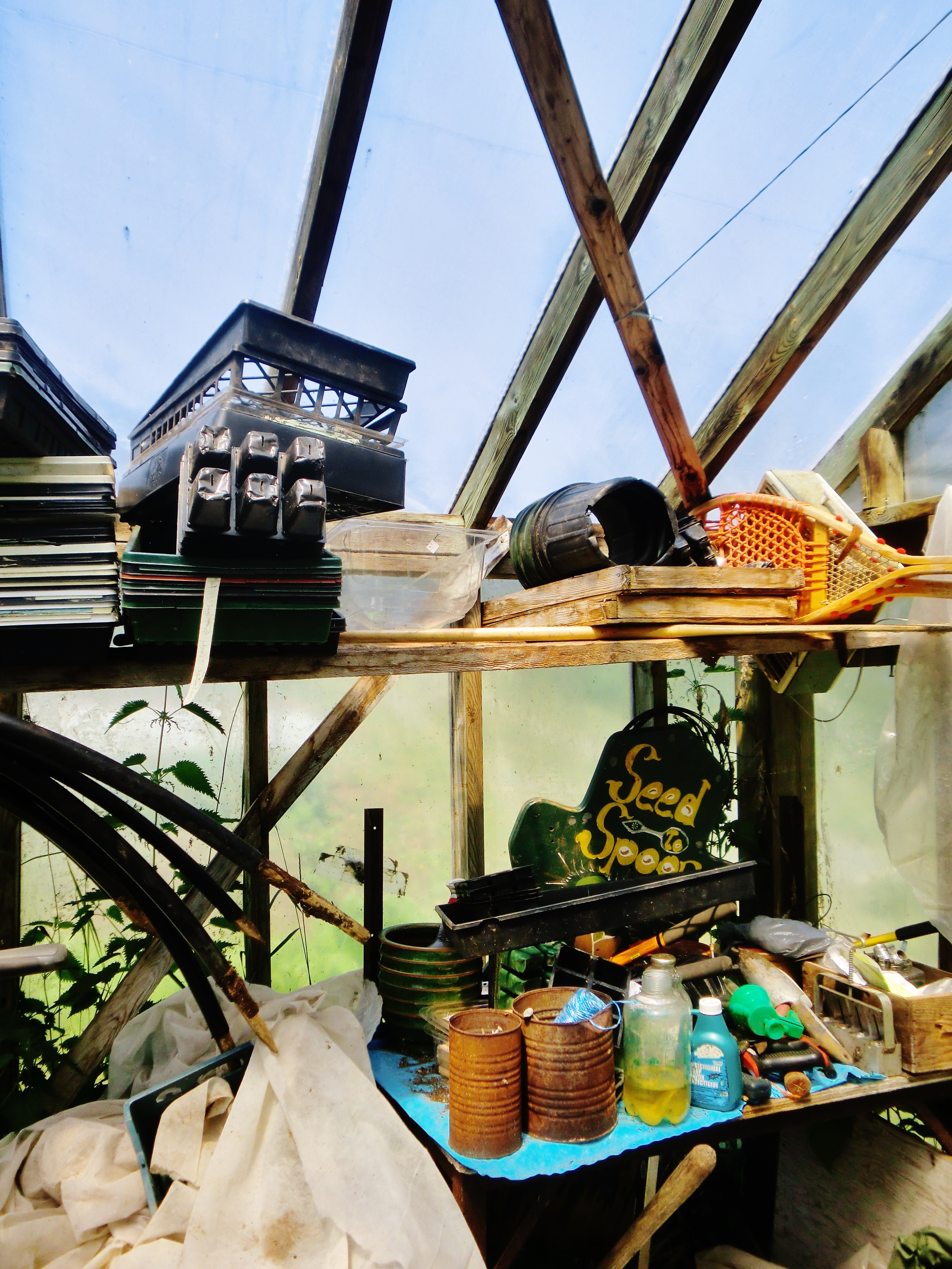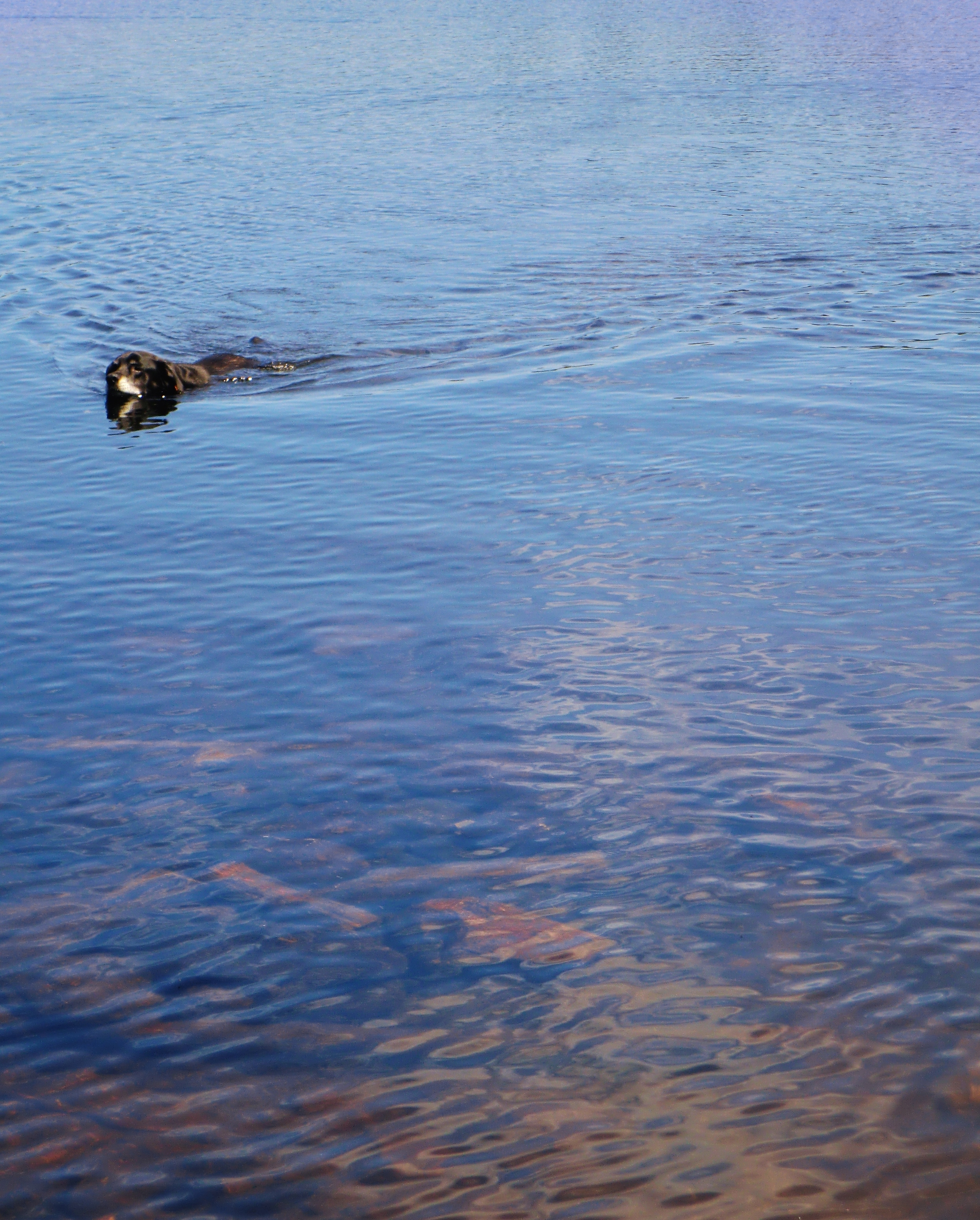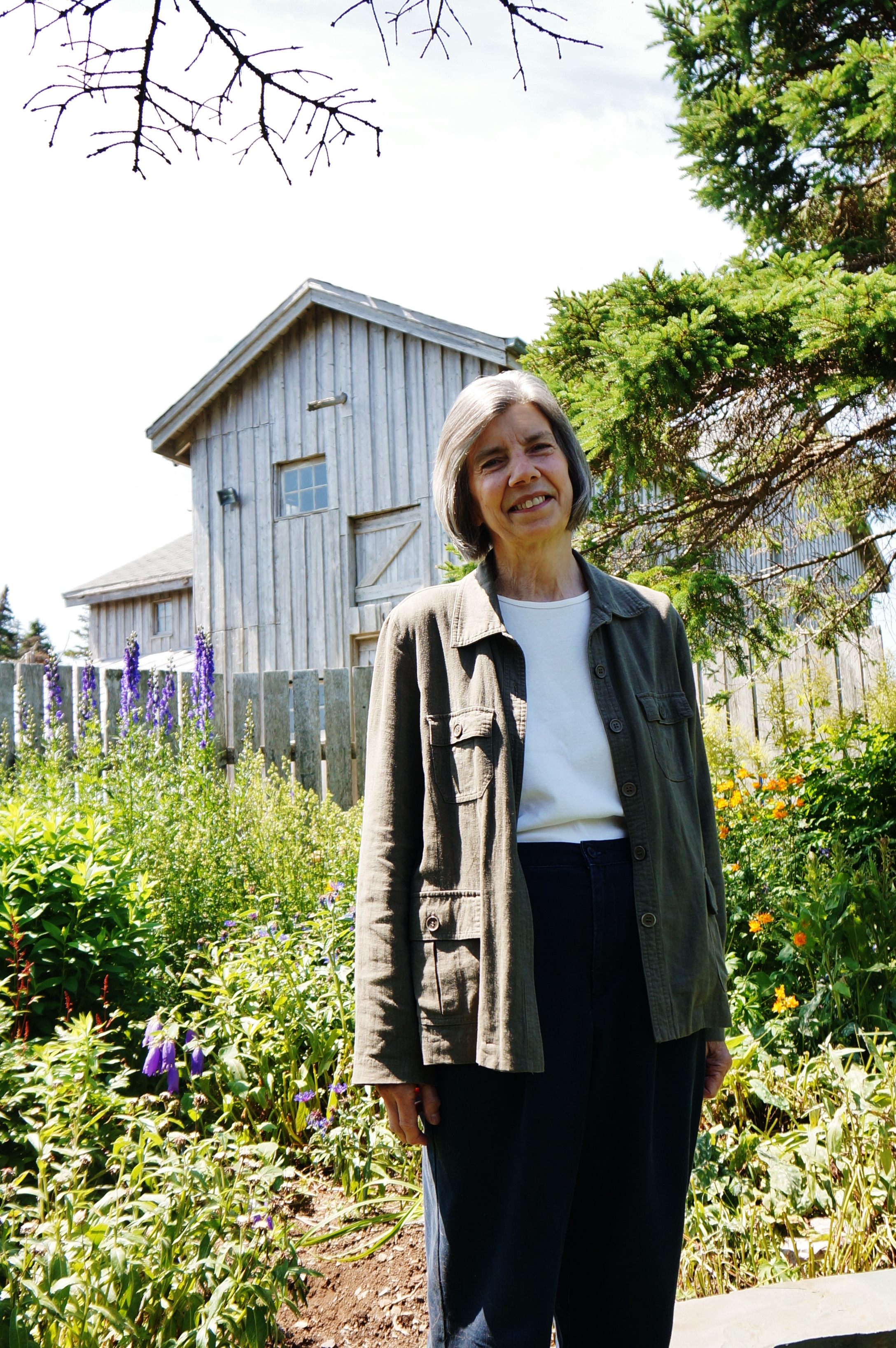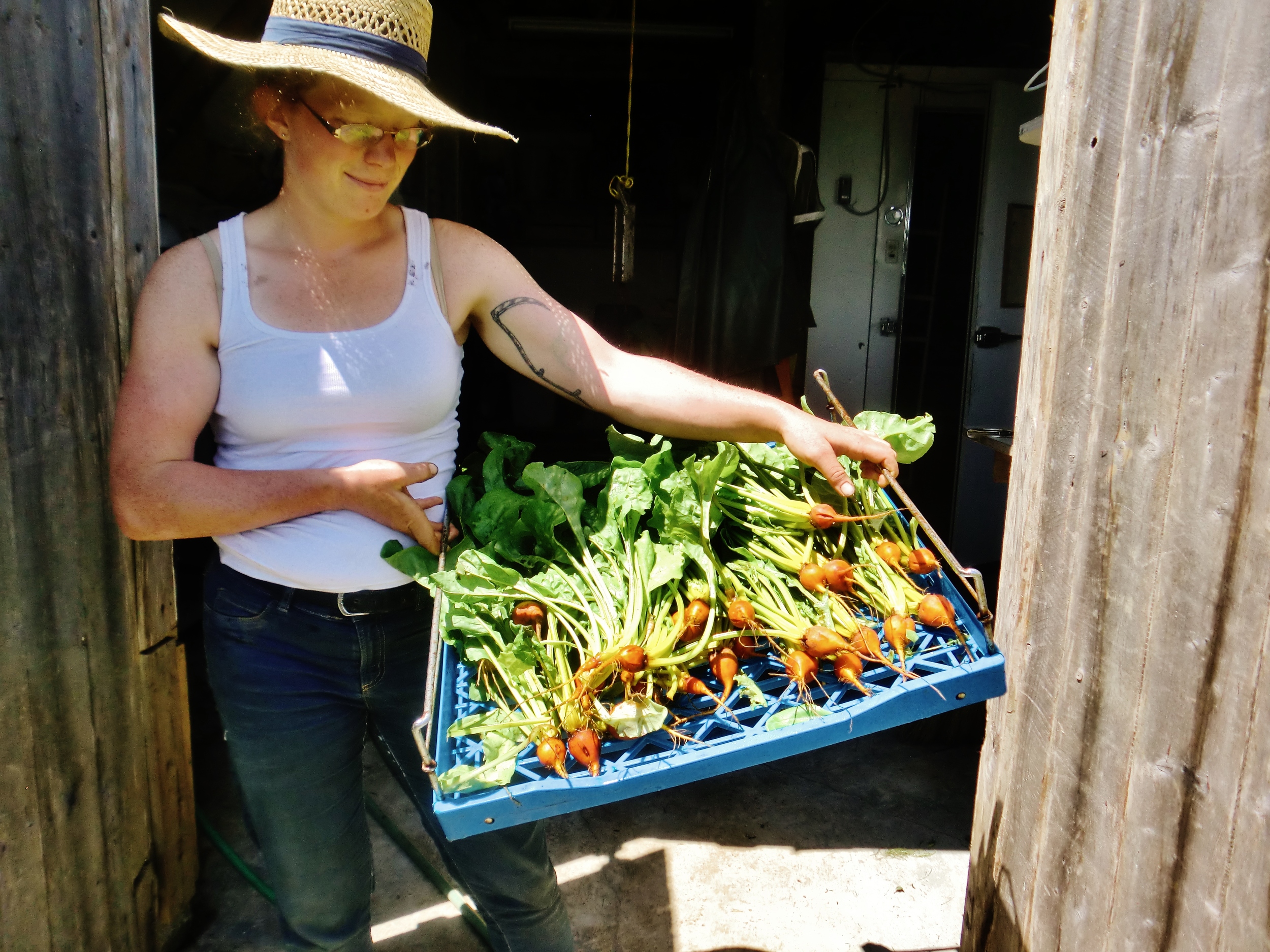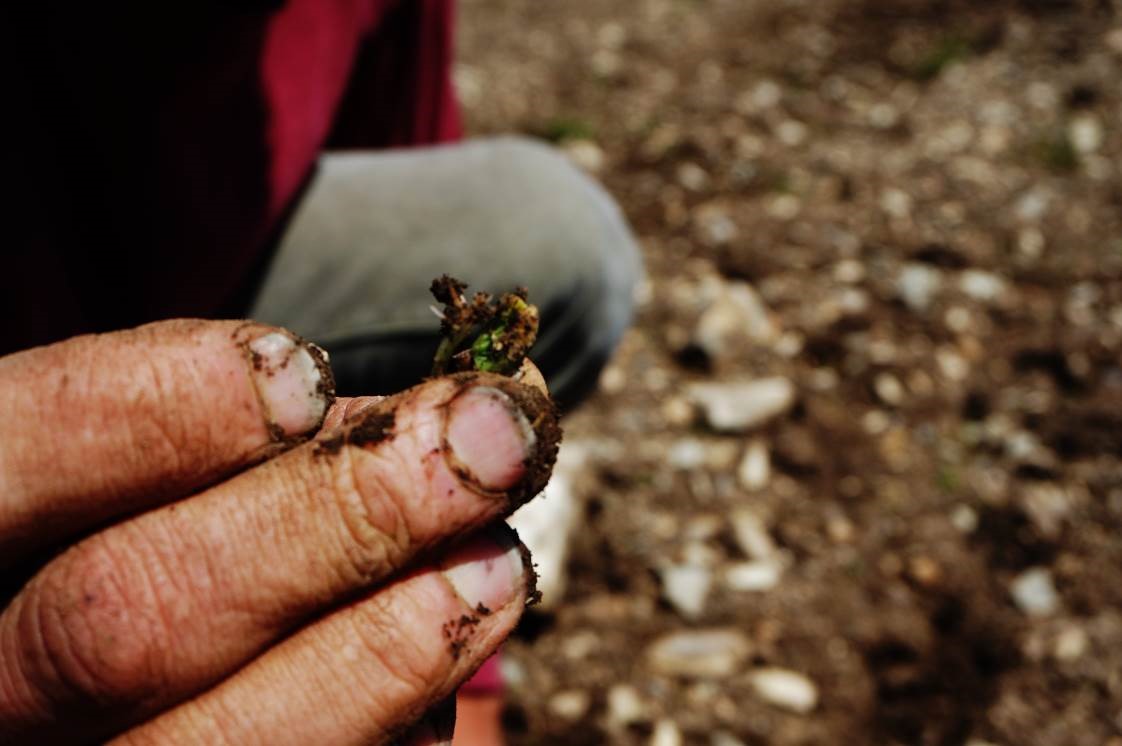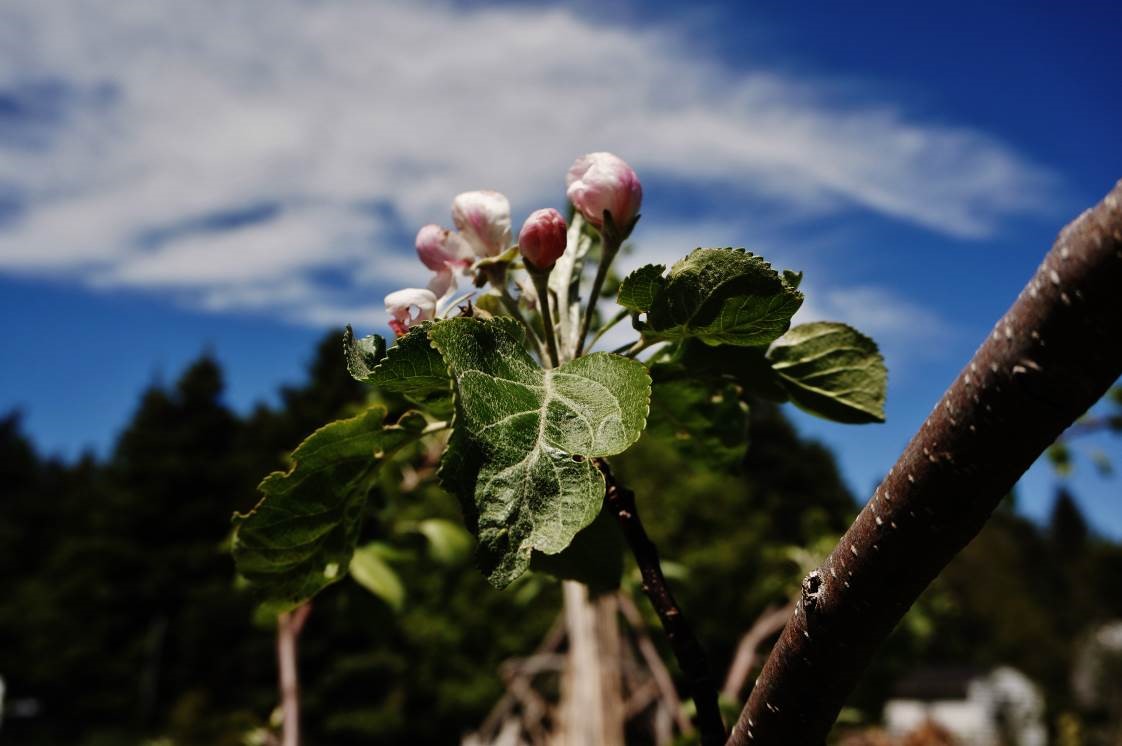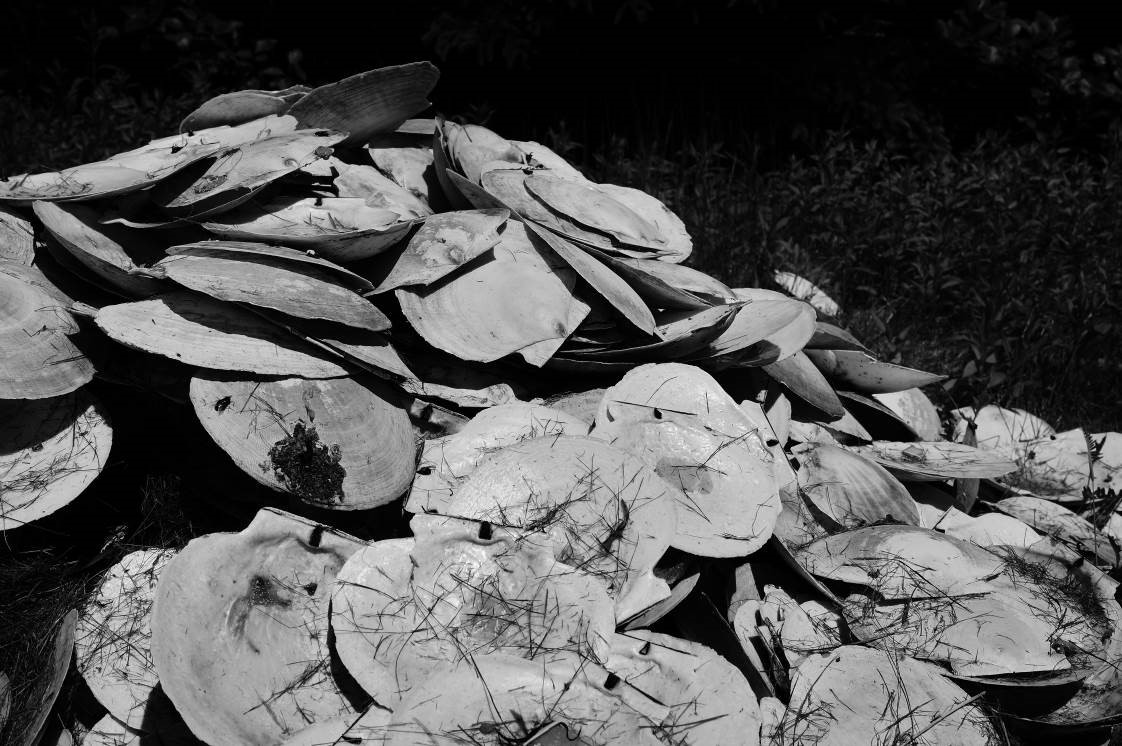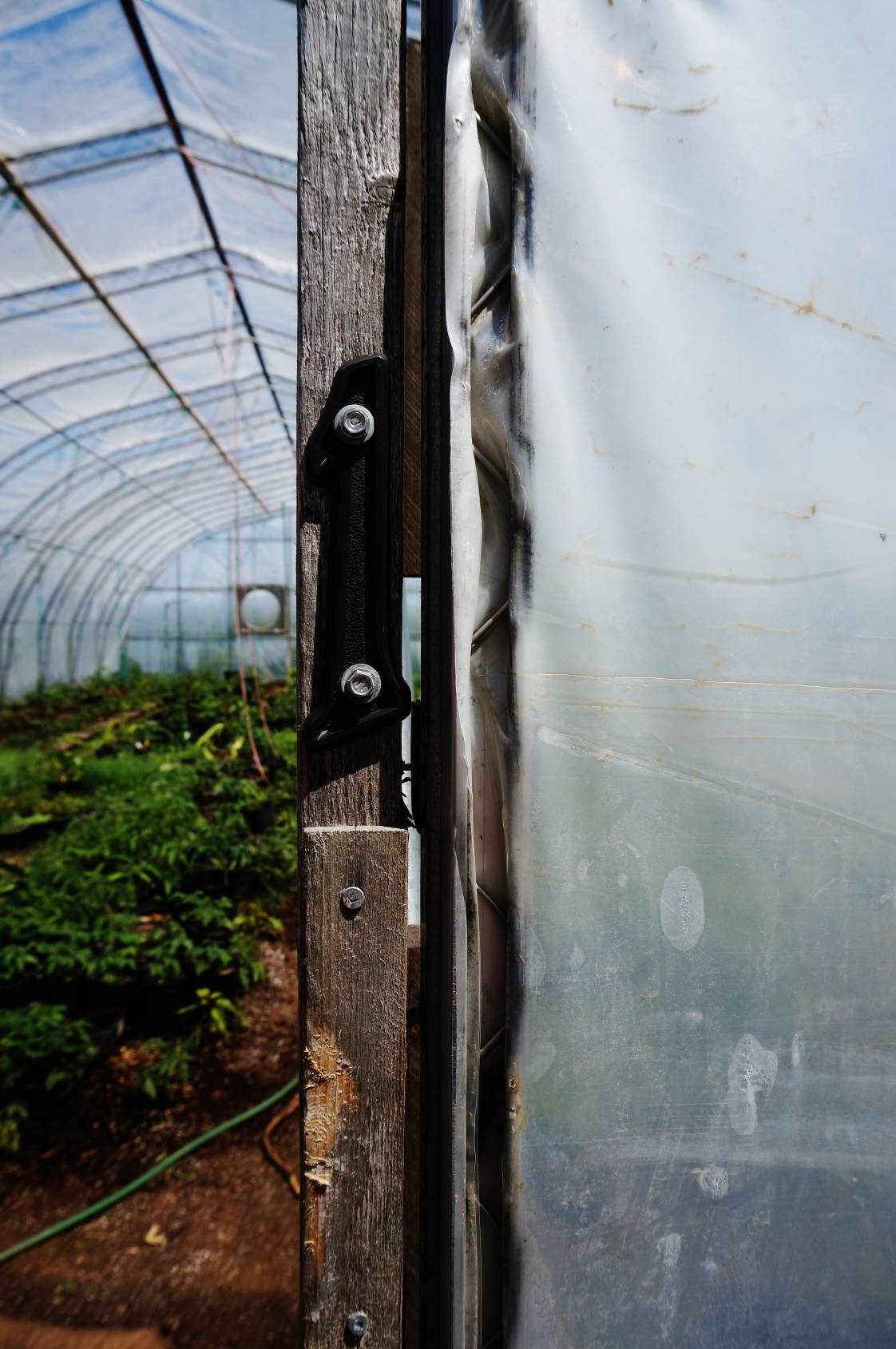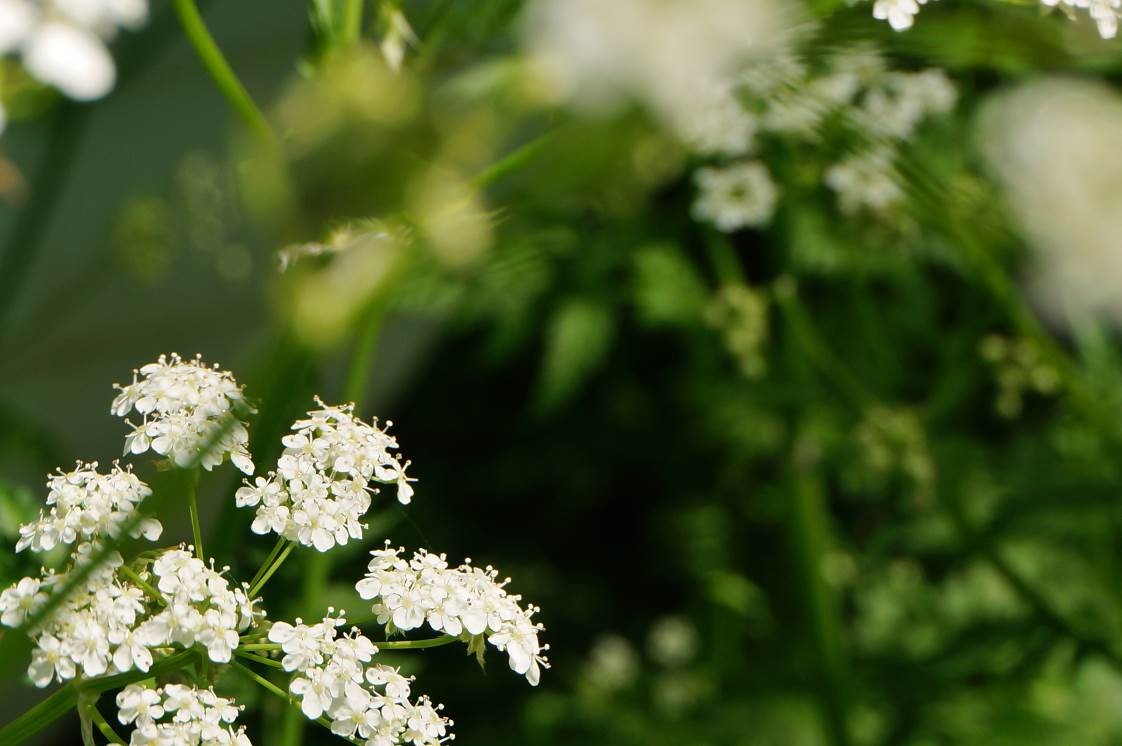Dan Rubin's enthusiasm is infectious. A former teacher and curriculum designer, now a writer, musician, and seed company owner, Dan runs Perfectly Perennial Herbs and Seeds on the edge of the ocean at his Pouch Cove home. Growing for seed and consumption on the lot behind his house, as well on an adjacent lot shared with four neighbours, Dan currently stocks eight seed varieties of flowers and vegetables alike. The passion and creative energy that Dan puts into his project yields results. He's interested in growing as much as possible in our windy, wet, and cold climate, which means that he uses as many tricks and tools as possible to make that achievable.
A Conversation with Evan Murray and Brian Kowalski of Murray Meadows Farm
This post is the fifth in a series that Sarah Campbell, an intern with FSN, is doing around the International Year of Family Farming this summer, gathering stories of family farming from around the Avalon Peninsula. Look for more stories in the coming weeks!

A couple of weekends ago I had the pleasure of going out to the Murray Farm to speak with Evan Murray and Brian Kowalski of Murray Meadows Farm, a one-acre parcel on sixty-five acres of land, primarily used to grow for Murray's Garden Centre. Evan met me at the Garden Centre, and pointed me up the hill to the Murray Meadows plot – past the family home, a series of greenhouses filled with Garden Centre growth, and a reservoir. I came upon a plot full of rows of vegetables, and full of greenhouses – five in total, strapped to the ground, and to each other, with a multitude of fabric straps.
Brian met me in the fields – hoe in hand, in search of medication for his allergies (acting up of late) – and walked me around, showing me kale (a veritable forest); cabbage (which should have headed up about a week earlier); flowers (he hopes to have a florist up to the farm to take a look sometime); leeks (they needed to be hilled soon); garlic (whose scapes needed to be picked); tomatoes (the first one was almost ripe!); radishes, gone to seed (he wondered if I wanted to try a seed pod? Radish-y!); and much, much more. I picked the rest of the garlic scapes that needed picking and Brian offered some carrots and kale in return (a rule on the farm, to make sure everyone who does some work goes home with something in hand).
Clover; cabbage; radishes, gone to seed
Afterwards, I headed down to the Garden Centre, where Evan was working for the day (someone had called in sick and they were short of hands). We sat in the back room and talked for almost an hour about the farm and about the business of farming at Murray Meadows – you can listen to that conversation below. He painted a picture of a family farm passed down through the generations, over the past two hundred years. Evan's grandfather farmed animals and vegetables, and his father, vegetables as well, later transitioning to growing annual and perennial 'floriculture products' for the Garden Centre. Evan and Brian are returning to the growing of food which has become more possible due to a renewed interest in, and market for, local food in the province.
The philosophy of farming that Murray Meadows undertakes to put into practice, as Evan explained it to me, is one of “intensive growing.” This means, for him, that he and Brian “try to generate as much as we possibly can on a one-acre parcel.” That's not a lot of land, “but,” he says, “we try and turn over that one-acre parcel at least two, or sometimes even three, times for each square foot of area that we have.” They grow “short season crops that we can get multiple yields out of,” and implement various season extension techniques. The people Brian and Evan look to for guidance in this endeavour are Eliot Coleman, “the grandfather of market farming,” who writes about techniques for growing in cold climates (himself harvesting out of Maine), and Wally Satzewich and Gail Vandersteen, writing out of Saskatchewan, who advocate for a method of growing they call SPIN (Small Plot Intensive) farming, a planning-intensive model which works to ensure maximal production and the most efficient turnover of crops possible.
The skeletal frames of the greenhouses
Perhaps my favourite part of the conversation was about the potentially arcane, potentially mundane – but incredibly essential – subject of greenhouses. “The climate of [the province],” as Evan points out, “is not conducive to a high turnover of crops without some sort of protection.” Greenhouses extend the growing season by providing a higher temperature, and protect plants from the wind – which can stunt plant growth in the province. Brian showed me the difference between a tomato plant – up to his elbow – in the greenhouse, and one – up to his knee – planted at the same time out in the field. But the concern with greenhouses, at least here, is the wind. Picture trying to get a hundred foot piece of plastic off of a metal frame in the middle of the winter in the middle of a snowstorm at midnight so the wind doesn't catch said frame and pull it down into a unsalvageable pile of twisted metal, and the problem begins to be clear. Evan attended a conference devoted to greenhouses in Corner Brook back in the spring, hosted by the NL Horticultural Producer Council. He's considering trying some of the structures he heard talked about there to adapt greenhouse growing to the province's weather – structures with frames constructed so that when they fall, they simply fall down, without the damage to the metal, and can be put back up. It’s something to consider for the future. For the moment they’ll carry on with straps, between greenhouses, and to the ground, which can be tightened to quell the shaking of the structures in the midst of a strong wind.
You can find Evan and Brian's food at the St. John's Farmer's Market which runs every Saturday from 9am until 2pm, June-October, as well as in the cooler at Murray's Garden Centre (1525 Portugal Cove Rd.), and through their CSA program (full for this year).
To follow the farm throughout the season, you can go to the farm's Facebook page, which is updated regularly with photos, news, and tales of the first tomato.
[soundcloud url="https://api.soundcloud.com/tracks/162813017" params="auto_play=false&hide_related=false&show_comments=true&show_user=true&show_reposts=false&visual=true" width="100%" height="150" iframe="true" /]
[soundcloud url="https://api.soundcloud.com/tracks/162813011" params="auto_play=false&hide_related=false&show_comments=true&show_user=true&show_reposts=false&visual=true" width="100%" height="150" iframe="true" /]
The Newfoundland tricolour, doubling as a wind-vane
[soundcloud url="https://api.soundcloud.com/tracks/162813012" params="auto_play=false&hide_related=false&show_comments=true&show_user=true&show_reposts=false&visual=true" width="100%" height="150" iframe="true" /]
[soundcloud url="https://api.soundcloud.com/tracks/162813009" params="auto_play=false&hide_related=false&show_comments=true&show_user=true&show_reposts=false&visual=true" width="100%" height="150" iframe="true" /]
[soundcloud url="https://api.soundcloud.com/tracks/162813014" params="auto_play=false&hide_related=false&show_comments=true&show_user=true&show_reposts=false&visual=true" width="100%" height="150" iframe="true" /]
A field of kale; beans; Brian, hoeing
[soundcloud url="https://api.soundcloud.com/tracks/162813015" params="auto_play=false&hide_related=false&show_comments=true&show_user=true&show_reposts=false&visual=true" width="100%" height="150" iframe="true" /]
[soundcloud url="https://api.soundcloud.com/tracks/162813010" params="auto_play=false&hide_related=false&show_comments=true&show_user=true&show_reposts=false&visual=true" width="100%" height="150" iframe="true" /]
Thanks Brian! Thanks Evan!
A Conversation with Sarah Crocker and Judy Lien of Seed to Spoon and the Lien Family Farm
This post is the fourth in a series that Sarah Campbell, an intern with FSN, will be doing around the International Year of Family Farming this summer, gathering stories of family farming from around the Avalon Peninsula. Look for more stories in the coming weeks!
A few weekends ago I was happy to spend some time at the Lien Family Farm, speaking with Judy Lien and Sarah Crocker, who now grows on the land for Seed to Spoon. Seed to Spoon started growing at the Lien Farm in 2009 and continues its traditions of community-centred agriculture and land preservation. It was a pleasure to speak with both of them.
The land has a long history. Judy and her late husband Jon farmed the land for almost forty years – since 1972 – working to grow food in a way that sustained the land and the community. With Mike Rabinowitz at The Organic Farm, the Lien Farm started a CSA in 1996 - a true innovation in the province - eventually growing food for over one hundred families. Connections made through the farm went beyond food. Judy speaks about the ways in which Jon was able to connect with people and build community: “He encouraged others to grow gardens. Whenever he would find a source of garden inputs, he circulated the news in a little newspaper called Odds and Hens, peat, lime, manure, mulch. Jon often rented the truck and delivered these garden inputs to friends and neighbours. He loaded up his Honda tiller and broke ground for people's first attempts at gardening. He endeared himself to many! From his youth he yearned to be a farmer. He succeeded through repetition in the rocky soil of Newfoundland.” In 2011, a year after Jon's death, he and Judy received the Gerrit Loo Memorial Award from the Atlantic Canada Organic Regional Network (ACORN) honouring the work they had done in their nearly forty years working the land.
“[Jon] encouraged others to grow gardens. Whenever he would find a source of garden inputs, he circulated the news in a little newspaper called Odds and Hens.”
Now renting land at the Lien farm, Sarah speaks very highly of Judy and of Jon, acknowledging that the work she does now is only made possible because of the long years that they spent building the farm – its buildings, its soil, its connections “I meet people,” she says, “who when I explain where I am and what I'm doing, they say, Oh, the Lien Farm! … Maybe they just remember dropping by to get vegetables... There's this huge network of people that feel connected to here, because of … [Jon's] outgoing outreach.” She adds, “I feel lucky to have inherited all of this infrastructure because it's kept my start-up costs and debt non-existent. That would not be happening without the excellent work that Jon and Judy have put into this place.” And the knowledge Judy has garnered from so many years farming is invaluable for Sarah today. For Sarah, Judy has the particular virtue of being someone who brims full with knowledge, and yet lets her make her own mistakes. Often, she says, it’s only months or a year down the road that she'll recognize how right Judy was.
On the two acres of land that Sarah cultivates, there are an incredible variety of plants growing up. Carrots, basil, tomatoes, tomatillos, and seedlings overflow in one greenhouse. Grapevines grow up in the corner. Peas, rhubarb, squash, onions, garlic, lettuce, arugula, cabbage and beans (to name a few) are coming up in the field. Sarah calls her way of growing “biointensive.” That means that she grows a lot in a small space – often two crops in one season on the same bit of land – trying to get the most from the earth.
Too, in and amongst the fields, there are a wide variety of outbuildings and structures – barns, a root cellar, a home, a cabin, and greenhouses, all using a “rough building” style that Jon favoured. Last winter, for the first time, Judy stored potatoes for Sarah in the root cellar over the winter packed in sawdust, which Sarah included as part of her CSA shares in the spring.
“I had a woman come to visit me once. After spending several years trying to settle into Newfoundland she was reluctantly preparing to leave. When she looked around the farm, she was almost in tears. She looked at me and said, 'I never knew this could all be possible here.'”
For the last word, and looking toward the future, I'll leave it to Judy and Sarah. They speak of farming in this province – perhaps not the first that comes to mind when farming is mentioned. “It is possible here,” says Judy. “It just takes a long time. … It's an attitude that we need our young people to have that there is a future in farming. … In a way our farm targets young farmers, and seeing that they get an opportunity to see that this is possible. I had a woman come to visit me once. After spending several years trying to settle into Newfoundland she was reluctantly preparing to leave. When she looked around the farm, she was almost in tears. She looked at me and said, 'I never knew this could all be possible here.' I was thankful that we had persevered, always seeking the secrets that made 'growing' possible in Newfoundland.”
“This farm,” says Sarah, “could be a showpiece […] of what is possible. [...] There needs to be a succession between generations. [...] It's so precious. The fields that have taken people generations to clear – those being turned into lawns is quite sad. It's quite a lot of work to get agricultural land here, so I think we should treat it very well when we have it.”
It won't be done by farmers alone – both Sarah and Judy speak of the need for support from the province and municipalities, both to plan for the preservation of agricultural land and to invest in farmers and the business of farming. But the work of Jon, Judy, and Sarah, and the sense of possibility that the Lien Farm and Seed to Spoon offer, seems a very good place to start.
To become a member in Seed to Spoon's CSA, you can contact Sarah in the spring. In previous years, the CSA has filled up by early May. You can also find Seed to Spoon's food at the St. John’s Farmer’s Market on Saturdays from 10-2pm, June to October.
And to follow along with the farm throughout the season, you can visit the Seed to Spoon Facebook page for photos, news, and recipes (and the occasional moose encounter video!).
Sarah: “This is a very, very exciting time right now ... Peas!”
Sarah: “This is a thing I made that I'm really excited about, called a dibbler. It’s a piece of scavenged sewer pipe, on a rolling mechanism. On a prepared bed, you just roll it down and it marks an even spacing. […] It saves me a lot of time. […] I've been meaning to make one for like six years, but I haven't, and now I have, and it feels great, and the rows are straight.”
[soundcloud url="https://api.soundcloud.com/tracks/161648099" params="auto_play=false&hide_related=false&show_comments=true&show_user=true&show_reposts=false&visual=true" width="100%" height="150" iframe="true" /]
“What's that growing up there?”
Sarah: “This is jerusalem artichoke. This is what it looks like after it's done and it starts to grow from its delicious tuber. Most of what I do is annual vegetable crops. But we have been adding perennial things.”
Sarah: “This is a root cellar that Judy and Jon built. We had delicious potatoes for the first week of the CSA this year that stayed in the root cellar all winter.” “That’s a great thing to have.” Sarah: “Yeah. It felt really good.”
[soundcloud url="https://api.soundcloud.com/tracks/161648092" params="auto_play=false&hide_related=false&show_comments=true&show_user=true&show_reposts=false&visual=true" width="100%" height="150" iframe="true" /]
Judy: “I was so thrilled to learn of row cover so that you could protect your vegetables from insects [...] also it raises [the] temperature four degrees […] I don't know what we'd do without really.”
Sarah: “I use a lot of floating row cover. It's a white spun plastic. It lets light and water through, but it does modify the environment enough that it makes a sort of shelter – [it] keeps the wind off, and raises the temperature … Zucchini!”
Judy: “Sarah is here in April, and she gets things started, and grows unusual crops in the greenhouse, like carrots. […] That's been a real eye-opener for me.” Sarah: “The carrot idea I totally lifted from Eliot Coleman.” Judy: “You did.”
[soundcloud url="https://api.soundcloud.com/tracks/161648101" params="auto_play=false&hide_related=false&show_comments=true&show_user=true&show_reposts=false&visual=true" width="100%" height="150" iframe="true" /]
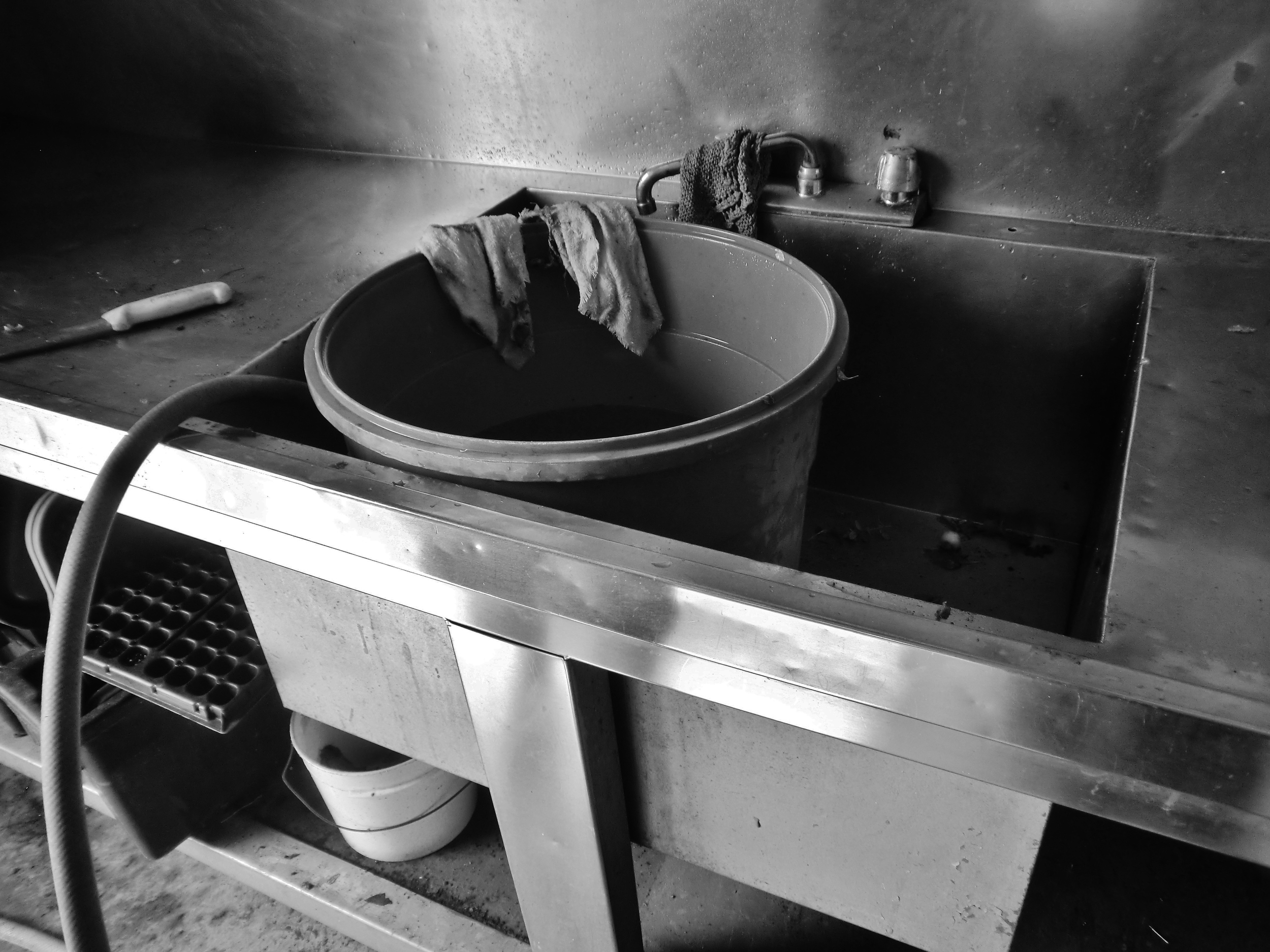
Sarah: “This is where the magic happens.”
[soundcloud url="https://api.soundcloud.com/tracks/161648097" params="auto_play=false&hide_related=false&show_comments=true&show_user=true&show_reposts=false&visual=true" width="100%" height="150" iframe="true" /]
Sarah: “Who's the best dog in the whole pond?”
[soundcloud url="https://api.soundcloud.com/tracks/161648090" params="auto_play=false&hide_related=false&show_comments=true&show_user=true&show_reposts=false&visual=true" width="100%" height="150" iframe="true" /]
Thank you Judy! Thank you Sarah!
A Conversation with Jeremy Carter of Nagels Hill Agri-Products
This post is the third in a series that Sarah Campbell, an intern with FSN, will be doing around the International Year of Family Farming this summer, gathering stories of family farming from around the Avalon Peninsula. Look for more stories in the coming weeks!
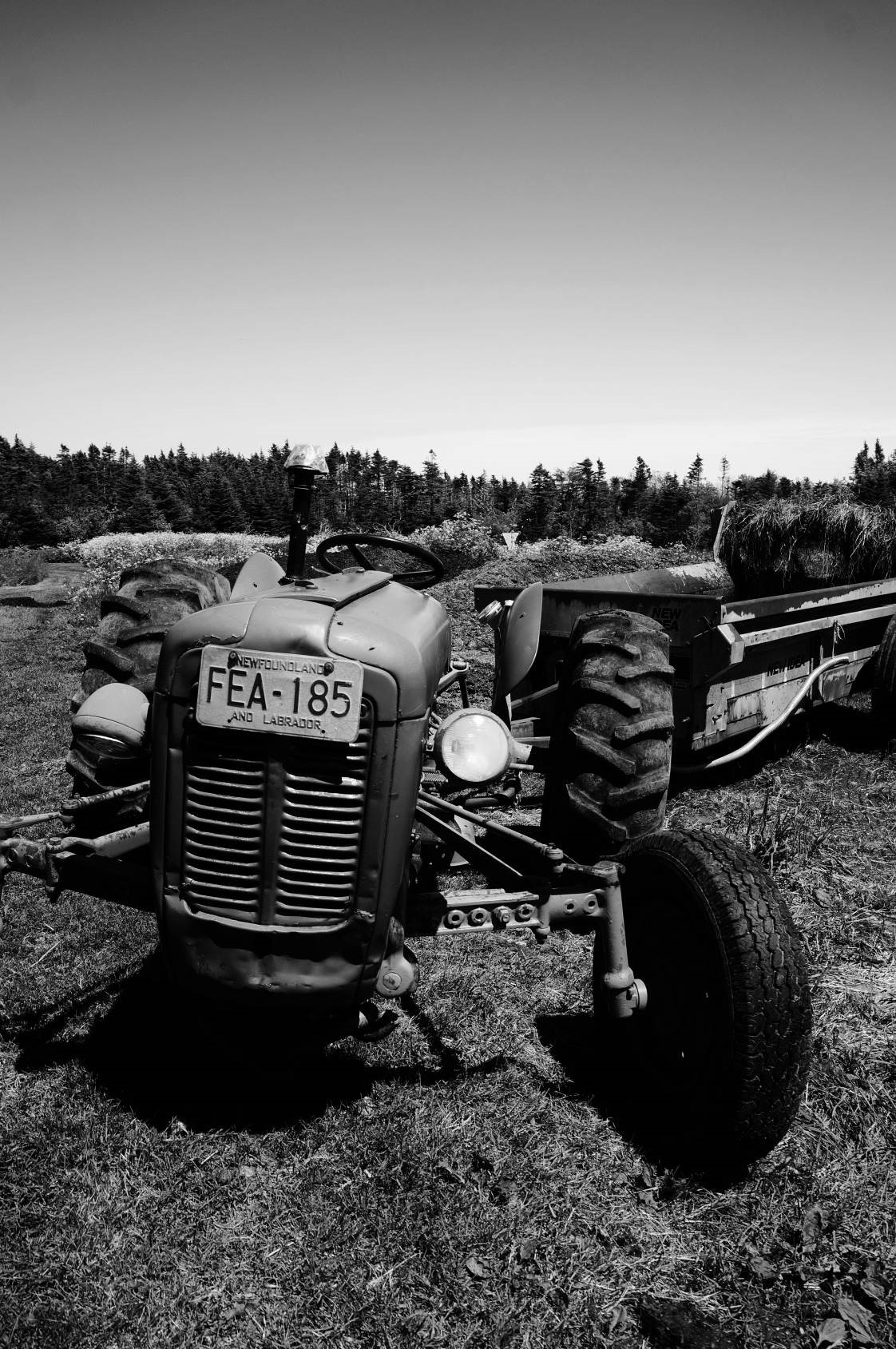 Last weekend I was happy to be able to speak with Jeremy Carter of Nagels Hill Agri-Products, both at the kitchen table and out in the fields. Below you'll find audio recordings of our conversation as well as photographs from the field. I really enjoyed chatting with Jeremy about the business of farming and his work as a farmer – take a listen! I hope you enjoy it as well.
Last weekend I was happy to be able to speak with Jeremy Carter of Nagels Hill Agri-Products, both at the kitchen table and out in the fields. Below you'll find audio recordings of our conversation as well as photographs from the field. I really enjoyed chatting with Jeremy about the business of farming and his work as a farmer – take a listen! I hope you enjoy it as well.
The land Jeremy farms is maybe most known as being the home of Mount Scio Savoury – a business which Jeremy's father started back in the 1960s. It has been in the family since Jeremy's great-grandmother bought a piece of land on Mt. Scio Rd. back in the early part of the 1900s. The family has bought up fields here and there over the years to expand it to the size it is today.
“Numerous experiments, that’s the nature of farming.”
Jeremy himself started farming, as he says, “seriously,” in 1986. From a farm focused on savoury, Jeremy has made the transition to one growing a diversity of crops – “about a dozen.” This allows him to have more security in the face of unpredictable weather and markets. It's this type of problem-solving and willingness to adapt to changing circumstances that farming needs, for him: “There's almost always another way […] that's what fun about it – figuring these things out. […] Numerous experiments, that’s the nature of farming.”
He spoke to me about the importance of “devis[ing] […] system[s]” to solve problems, as well as the need for adaptation, experimentation, and “ingenuity.” Not to mention the fact that Jeremy is, like a lot of the farmers that I’ve met, a dyed-in-the-wool “pack-rat” (the better to have odds and ends to devise creative systems with!).
All of this underlines what seems to be a truth of farming – that it is the business of thriving in an ever-changing world, which farmers do and have done by being resilient, creative, and having a mind for adaptation.
You can find Jeremy's food at the St. John's Farmer's Market on Saturdays from 10-2pm, June to October, and at the farm – 100 Mt. Scio Rd.
[soundcloud url="https://api.soundcloud.com/tracks/157664799" params="auto_play=false&hide_related=false&show_comments=true&show_user=true&show_reposts=false&visual=true" width="50%" height="150" iframe="true" /]
“That’s the arugula. […] You can sort of see I’ve got in in stages.”
“This is the bean experiment I was talking about. See there’s a bean there, and then there’s one there, and I don’t know if there’s really much of anything in between. I planted a lot, right, but that’s all that damp cold weather we had, the beans just don’t… Oh, there’s one there. See, it didn’t really, it’s not really doing so well… If I’d’ve transplanted them, I could have had a full row.”
[soundcloud url="https://api.soundcloud.com/tracks/157672754" params="auto_play=false&hide_related=false&show_comments=true&show_user=true&show_reposts=false&visual=true" width="50%" height="150" iframe="true" /]
“It’s picturesque, anyway.” “It is picturesque.”
“That’s scallop shells that Peter from Raymond’s, he wondered if I had any use for them, and being a pack-rat I thought, well maybe. It is a source of calcium for your soil, right, it’s just it’s very long-term.”
[soundcloud url="https://api.soundcloud.com/tracks/157666167" params="auto_play=false&hide_related=false&show_comments=true&show_user=true&show_reposts=false&visual=true" width="50%" height="150" iframe="true" /]
“The French shallots don’t flower. The seed shallots do flower. […] The French shallots […] you can see they’re sort of a purple colour. […] [It’s] an ongoing thing I’ve been fooling around with for a few years. […] Shallots are wonderful.”
[soundcloud url="https://api.soundcloud.com/tracks/157664191" params="auto_play=false&hide_related=false&show_comments=true&show_user=true&show_reposts=false&visual=true" width="50%" height="150" iframe="true" /]
“I run a bit of heat to get it started, but […] the way I run the greenhouses it’s just passive solar heat.” “And it’s warm.” “Yeah, it’s a lot of heat.”
“I guess the plastic probably gets ripped over the winter?” “It does, yeah. I keep changing the way I arrange [it]. Trouble is, it’s very windy here, as you’ve probably noticed, and so structures – it’s an Ontario company that does this, it’s not really designed to withstand the amount of wind that we have. So that’s kind of been a big thing over the last few years, to try to figure out what I need to do to resist the wind. So what I’ve started doing is putting more [tracking wire] on the arches so that there’s more points of attachment […] That should improve it. We’ll know after next winter, or storm season.”
[soundcloud url="https://api.soundcloud.com/tracks/157672323" params="auto_play=false&hide_related=false&show_comments=true&show_user=true&show_reposts=false&visual=true" width="50%" height="150" iframe="true" /]
“This is the reservoir. It gets kinda dry here sometimes. These are rocks off the field that we used to make a little dam. […] Remember I was saying that the soil doesn’t hold on to a lot of water so, although, you know, it’s kind of a wet place, once it gets dry your soil doesn’t have much reserve and it’s good to have some source of irrigation.”
“Is this Queen Anne’s Lace, is that what it’s…" “Yeah, it is. [...] It’s quite pretty, actually.”
[soundcloud url="https://api.soundcloud.com/tracks/157663889" params="auto_play=false&hide_related=false&show_comments=true&show_user=true&show_reposts=false&visual=true" width="50%" height="150" iframe="true" /]
“Oh, the wintertime. Do you do things in winter? Repairs, or?” “I do have another business that I’m involved in. […] That takes up more time in the winters. […] I heat with wood as well […] which is kind of a partial winter job. Especially last winter. […] That’s another whole interesting lifestyle.”
[soundcloud url="https://api.soundcloud.com/tracks/157672756" params="auto_play=false&hide_related=false&show_comments=true&show_user=true&show_reposts=false&visual=true" width="50%" height="150" iframe="true" /]
Thanks Jeremy!








